Asilomar once again beckons! This year’s conference takes us on a walk through nature – in the world around us, and within ourselves. We will be presenting a roster of exceptional speakers, representing fields from environmental history to cognitive science, from evolutionary biology to mathematics in art. As always, Asilomar promises both a lively mental workout and an occasion to share fellowship, explore fresh ideas, renew old friendships and begin new ones – all in a location of exceptional peace and beauty. We encourage Phi Betes young and old to join us this year, and to bring along family and friends for an inspiring, relaxing and enriching event.
Asilomar 2015
Presidents’ Day Weekend, February 13-16, 2015
Sign up for the Upcoming AsilomarTax deduction for registration paid in 2014:
If you paid $100/person registration, your deductible amount is $67.89/person.
If you paid $125, your deductible amount is $92.89/person.
Asilomar Chair, Deirdre Frontczak
Speaker Schedule, 2015
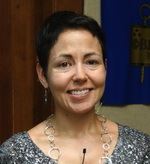 Dr. Beth Shapiro, genetics, UC Santa Cruz: How to Clone a Woolly Mammoth: The Science of Science Fiction -- and the useful biological data that the "new" mammoth might offer to paleontologists, biologists, physiologists and more.
Dr. Beth Shapiro, genetics, UC Santa Cruz: How to Clone a Woolly Mammoth: The Science of Science Fiction -- and the useful biological data that the "new" mammoth might offer to paleontologists, biologists, physiologists and more.
The discovery of a well-preserved 10,000 year old mammoth in the islands off Siberia has revived speculation about prospects of reviving long-extinct species from tiny fragments of genetic code. Here Dr. Shapiro – a MacArthur fellow and specialist in ancient DNA – explores not just the frenzied stories of popular media, but the wealth of useful biological information that the “new” mammoth might offer to paleontologists, molecular biologists, physiologists and other researchers.
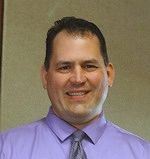 Dr. Robert Chester, environmental history, U.C. Berkeley: Creations: The Nature of America' s Largest Silver Strike -- the economic, technical and environmental changes that transformed the Sierra Nevada region, and beyond.
Dr. Robert Chester, environmental history, U.C. Berkeley: Creations: The Nature of America' s Largest Silver Strike -- the economic, technical and environmental changes that transformed the Sierra Nevada region, and beyond.
The discovery of the Comstock Lode in the 1850’s made the Sierra Nevada region a site for economic and technical innovation, the building of new homes and communities for emigrants and immigrants, and rapid and profound environmental changes that remain visible through the surrounding region. This story combines the massive influence of large corporations and structural economic changes transforming the country and the perspectives of ordinary people who shaped and were shaped by these forces above and below ground.
 Dr. Catherine Spaulding, Resident, Georgetown University Medical Center/2010 PBK graduate: New Beginnings: Reflections from a First Year Residency -- the challenges of communication, and its physical and emotional impacts, in a teaching hospital
Dr. Catherine Spaulding, Resident, Georgetown University Medical Center/2010 PBK graduate: New Beginnings: Reflections from a First Year Residency -- the challenges of communication, and its physical and emotional impacts, in a teaching hospital
A 2009 ΦBK graduate of Vanderbilt University, Catherine recently received her MD from Georgetown where she is now completing her residency. Catherine is a published author: first editing a book of interviews with homeless people in Nashville, and more recently authoring the cover story of Alpha Omega Alpha’s Journal, the Pharos – an honor that accompanies the prestigious Helen Glaser scholarship award. She is passionate about global health and working with underserved populations, and has spent time working in Ghana, India, Guatemala, and Chile. In her rare spare time, Catherine enjoys running marathons and last winter summited Mt. Kilimanjaro.
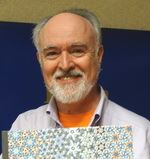 Dr. Frank Farris, mathematics, Santa Clara University: Seeing Symmetry – an illustrated talk about a mathematical art show
Dr. Frank Farris, mathematics, Santa Clara University: Seeing Symmetry – an illustrated talk about a mathematical art show
The word symmetry may evoke bilateral symmetry, as in an idealized human face or the two wings of a butterfly. For mathematicians and scientists, the concept is richer, ranging from the patterns of wallpaper to the symmetries of a molecule or crystal. This talk will explain the mathematical classification of plane symmetries, and describe an artistic and mathematical process that anyone, regardless of prior knowledge, can use to create images like these.
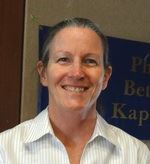 Dr. Patti Simone, psychology, Santa Clara University:/ PBK Teaching Excellence Awardee: A Walk Down Memory Lane: How Memory Works and How to Make it Work Better at Any Age
Dr. Patti Simone, psychology, Santa Clara University:/ PBK Teaching Excellence Awardee: A Walk Down Memory Lane: How Memory Works and How to Make it Work Better at Any Age
Memory champions (people with great memories) are made, not born. In this talk – by a 2014 ΦBK Teaching Excellence awardee -- we'll explore what cognitive neuroscientists understand about how memory works, including why we remember some things easily (like a TV show or book or birthday) and forget other things (like a presentation or lecture or birthday).After the introduction to the role of the brain and context in memory formation, we'll cover some evidence-based tips on how to improve memory.
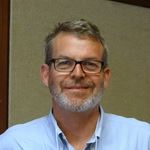 Dr. Michael Meloy, California State Parks Historian: Asilomar: In Search of a Better World -- how a place conceived for the moral, spiritual and physical uplift of young women
Dr. Michael Meloy, California State Parks Historian: Asilomar: In Search of a Better World -- how a place conceived for the moral, spiritual and physical uplift of young women
How does a place conceived for the moral, spiritual, and physical uplift of girls and young women become globally recognized for the exchange of ideas on issues, ranging from housing discrimination to early childhood education to the benefits and risks of recombinant DNA research? Together, we will consider the history of Asilomar as part of a larger quest to build a better society. In the process, we hope to deepen our understanding of California's 20th century, and perhaps find new perspectives to help us build more sustainable public institutions in the future.
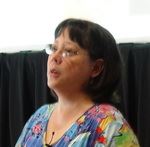 Dr. Leilani Miller, biology, Santa Clara University: The Science and Ethics of DNA Forensics: questions of biotechnology, privacy and ethics that arise in the science of DNA profiling
Dr. Leilani Miller, biology, Santa Clara University: The Science and Ethics of DNA Forensics: questions of biotechnology, privacy and ethics that arise in the science of DNA profiling
DNA profiling (previously called DNA fingerprinting) is a technique used by forensic scientists to distinguish between individuals by analyzing specific regions of their DNA. DNA databases are collections of these profiles that detectives can be searched for “hits” during criminal investigations. A new type of biotechnology (PCR) developed in the 1980’s made it possible to process very small amounts of DNA left at crime scenes. Using this new technology, many “cold cases” have been solved and, in current cases, DNA profiling has helped to acquit or convict suspects in many of the most violent crimes, including rape and murder. What exactly is a DNA profile? How do you determine someone’s profile? Whose DNA profiles are currently in the FBI databases? Whose DNA profiles should be in a searchable database? What has the Supreme Court said about this? What is the “CSI effect”? Should we worry if our relatives are criminals? These are just some of the questions we will discuss.
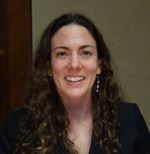 Dr. Karen Frindell-Teuscher, Chemistry, Santa Rosa Junior College: Taking a Cue from Nature: Bio-inspired materials in daily life and beyond -- what science and engineering world has learned from slug slime, spider silk, abalone shells and more.
Dr. Karen Frindell-Teuscher, Chemistry, Santa Rosa Junior College: Taking a Cue from Nature: Bio-inspired materials in daily life and beyond -- what science and engineering world has learned from slug slime, spider silk, abalone shells and more.
